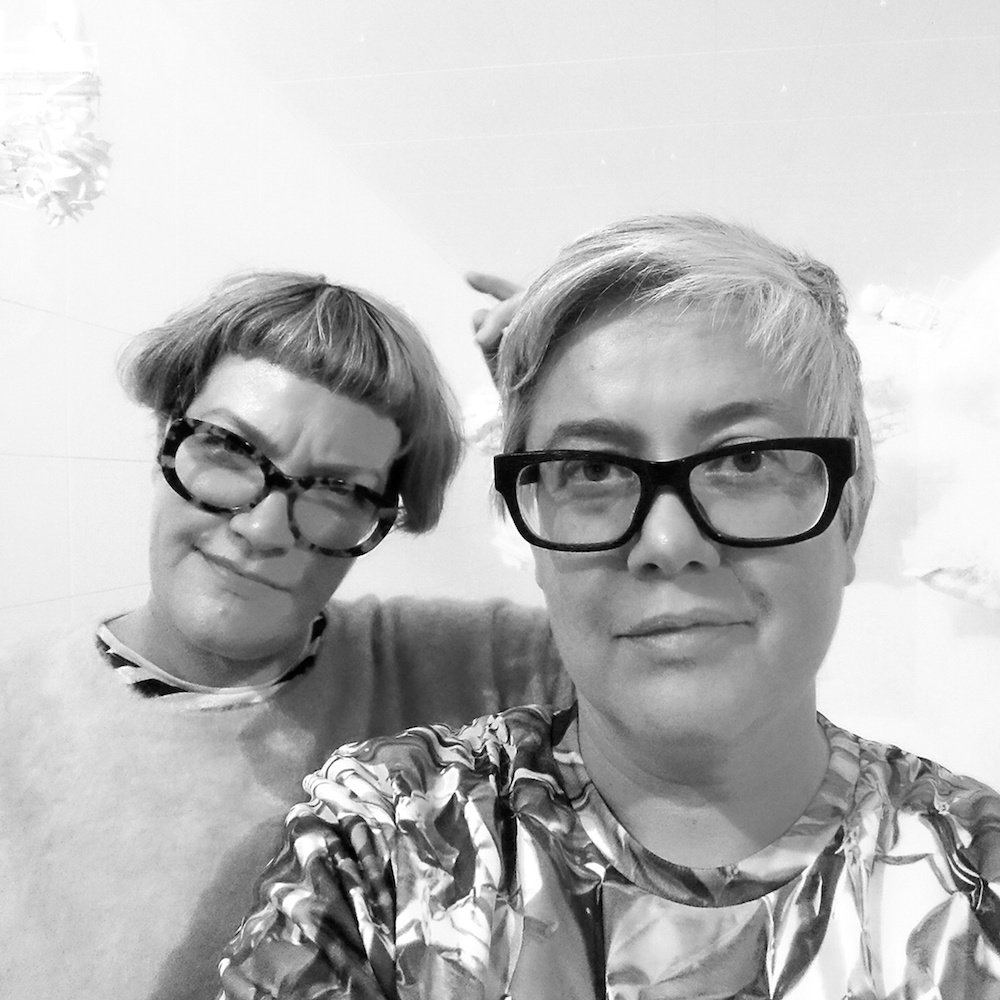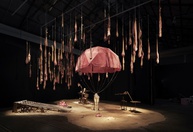Mish Meijers & Tricky Walsh
New Norfolk, Tasmania
2019
Displayed 2019 at Carriageworks

Mish Meijers & Tricky Walsh
Mish Meijers
Born 1972, Melbourne. Lives and works New Norfolk, Tasmania
Tricky Walsh
Born 1974, Moe, Victoria. Lives and works New Norfolk, Tasmania
Mish Meijers and Tricky Walsh work individually and collaboratively. They have been collaborating on the Henri Papin project for the last 13 years. Henri Papin is a fictional aggregate taken from history, film and literature that generally concerns itself with the construction of immersive psychological environments that authenticate the character and their world in the context of this one.
Artist text
by Ann Finegan
Henri Papin, the fictional creation of Mish Meijers and Tricky Walsh, first manifested in 2006 as the fugitive presence whose trail is sensed from the oddest conjunctions of material remainders. To cite the detective in Jean-Pierre Melville’s 1967 film The Samurai, the various assemblages are chaud, still warm, as if the viewer has arrived on the scene not long after his departure. The Collector: Hunting and Gathering (2007) consisted of a shelf containing two items: a sample of urine in a medical container and an architectural model of a graffiti-covered industrial building. A lone white plastic figurine contemplated the facade, lending a certain abject quality to this unexplained set of objects, which, nonetheless, due to the presence of the urine, acquired a strange kind of intimacy.
Already, from the first, Henri Papin generates narrative collusion and a desire to fathom, describe and wonder. In short, to rethink the contingent relationships between matter and esprit (that wonderful French word that combines intelligence, wit and spirit) – often of the strangest and most incongruous kind. For The Crocker Land Expedition (2018), it seems that Henri has been travelling, or perhaps his fervid imagination is simply traumatised by the global context of mass displacements, climate change and forebodings of imminent disaster. However, unlike his surrealist forebear Magritte, Henri does not dream of umbrellas raining droplets of bowler- hatted men; instead, suspended army parachutes dangle a plethora of human limbs over a forlorn ‘island’ of forms eaten out by termites.
As with another earlier installation, The Collector: L’ortolan (2013), you can go online and find the story. An ortolan is a rare songbird that is cooked alive in alcohol and consumed as a delicacy by diners shrouding their heads to avoid the wrath of God. Likewise, The Crocker Land Expedition channels the 1913 journey of explorer Robert Peary, who, after failing to reach the North Pole in 1906, persuaded backers to fund his discovery of an island that was non-existent.
Part of the rationale, therefore, for the viewer, is discerning the core of the real within the fabula, some touchstone with reality inside a narrative of partial accountability. In the very first Henri Papin installation, we presume the yellow liquid in that familiar sample container is, in fact, urine and that it belongs to the man whose model is also left on the shelf. As such, Meijers and Walsh could be said to put together their assemblages as if inspired by the plot of Hitchcock’s North by North-West (1959), in which a real man, Thornhill, is mistaken for an imaginary man, Kaplan; Kaplan is the creation of an American intelligence agency, designed to send the Russians on a wild-goose chase of a man who does not exist. The Russians sneak into Kaplan’s hotel rooms, examine his suits, find a comb caked with dandruff, and hear him paged in the lobby. They follow his suitcases and bookings trail from hotel to hotel. For Henri Papin, Meijers and Walsh lay similarly complex and complicated tracks.
